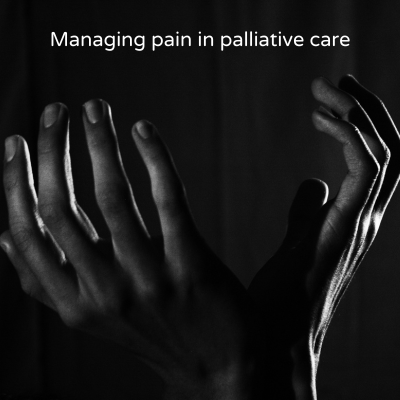Beyond saving lives

Gopika was paralyzed waist down, in debilitating pain and bedridden for over two years. She was struggling to cope with life. Her marriage had failed, and she was unsure what the future had in store for her. Searing pain marked her daily life.
A chance encounter with Pallium India which resulted in a 3 month long stay at the facility proved life-changing for her. Full-fledged support from the multi-disciplinary team gave her the confidence to move on. They counseled her and empowered her to be more independent, giving her a new lease on life. Today Gopika aspires to be an actor and a model.
Pain and Palliative care
Pain is understood in the context of not just the physical, or the score on the pain scale (a self-reporting scale where 10 indicates extreme pain and 0 is no pain). Palliative care views pain through a lens of ‘Total Pain’ – where the physical experience is influenced by the circumstances within which the patient exists.
Physical pain of course is one of the most common symptoms in many illnesses. It can greatly limit normal life for people who experience it. Multi-disciplinary palliative care teams seek to relive pain through detailed assessment and interventions that take into account all aspects of the patient’s life that may have a bearing on their experience of pain. This includes looking beyond the physical, to, psychosocial, emotional and spiritual.
Assessing pain is the first step. The palliative care team will thoroughly assess physical pain by evaluating its intensity, location, and characteristics. Based on this, a pain management plan is mapped out for the individual. Medical experts on the team are knowledgeable about different pain medications and their appropriate use, which are prescribed based on the assessment. There is care beyond prescription. Patients are also monitored for the effectiveness of the medicines and side effects, if any. In choosing a multidisciplinary approach, palliative care aims for a comprehensive approach to mitigating pain. This utilizes the expertise of various members of the team – Social Workers, Counsellors, Occupational Therapists, Rehabilitation specialists – to address the different types of suffering brought on by the disease and its treatment. For instance, in India, 55 million Indians are pushed below the poverty line annually dues to catastrophic out of pocket health expenditure [1]. This impoverishment has a snowball effect on other parts of the patient and their families’ lives. Psycho-social care entails identifying the different ways in which the circumstances of the patient’s life compound their experience of pain and suffering.
Additionally, palliative care teams collaborate with the primary medical team to ensure seamless care coordination. In the case of Gopika, she has been provided with home delivery of medications and 24X7 support to reach out to the team in case of any discomfort. Today, Gopika moves around in a wheelchair, and with assisted occupational therapy, she dreams of providing a life for her 10-year-old son and family.
By addressing pain comprehensively and employing a holistic approach, palliative care aims to enhance the individual’s overall quality of life, promote comfort, and help them cope with pain more effectively.
Also read:
Palliative Care: Helping people live better and happier
Palliative Care: Improving Quality of Life
[1] Wagstaff A et al. Progress on Impoverishing health care expenditure in 122 countries. The Lancet 2018; 6:180-192.




